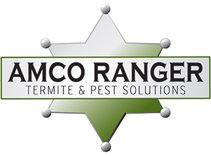The 3 Different Types of Subterranean Termites, Explained
Once, we turned to a group of Missouri homeowners and asked them to draw us a picture of a termite. Some sketched out white ants, while others doodled something that looked like a housefly. If the average homeowner isn’t sure what a termite looks like, it’s much harder to ensure there aren’t any eating away at their house!
There is one common type of termite that causes destruction in our region. Subterranean termites can nibble away at your foundation until your beautiful home is a husk of splinters and paint.
The first step toward security is education. We’ve created this guide to help our local families and businesses understand what to look for when they suspect they have an unwanted guest lurking in the walls.
Read on to learn about the different types of termites—and what to do if you hear munching from behind the wallpaper.
All About Subterranean Termites
When you look at a subterranean termite, it’s challenging to spot a feature that makes them unique. To the average eye, they resemble ants. Worker termites across all groups and species are nearly identical, making identification based on appearance a challenge.
The trick to quick identification is to assess the termites’ location and the damage they have caused. Naturally, subterranean termites make their nests underground. They construct a series of tunnels that help them to navigate.
To move above ground, subterranean termites construct mud tubes. They thrive in wet spaces, so the moist earth is essential. A mud tube looks like an oblong streak of mud on the ground or the side of a structure.
You can confirm the presence of subterranean termites by examining the wood they’ve consumed. These insects eat softwood, leaving any hardwood behind as they tunnel through. You’ll notice streaks of dirt left behind, which fill the tunnel system.
Take a look at the tunnels. Do they go with the wood grain or against it? Subterranean termites are particular and prefer to go with the grain.
Subterranean termites love warm, damp places, making Missouri an ideal place to feed and breed. The most obvious sign that you have an infestation is the presence of mud tunnels on the outside or foundation of your home. Schedule an inspection to confirm the presence of these pests and stop damage in its tracks.
Types of Subterranean Termites
The reason why identifying termites is such a challenge is because termites play different roles, even within a single colony. Think about the different types of bees that sustain life in the hive. Termites have a similar system.
The four types of subterranean termites you might see include workers, swarmers, soldiers, and queens. Each looks slightly different, though they’re all part of the same species. Understanding each type can help you recognize what termites do at stages of their unique lifecycle.
Worker Termites
A worker termite is a worker with a job. Like a commuting human, the worker leaves the nest to support the colony. They seek out sources of food and nutrition, such as the wood in your home.
Other worker termites focus on maintenance tasks. They construct and repair the mud tubes that lead to the food. The workers consume cellulose, so they are highly motivated to complete this essential task.
Swarmer Termites
Much of the time, swarmer termites don’t do much. They don’t even eat. When the time is right, it’s the swarmers’ job to seek out mates so they can establish new colonies.
Swarmer termites are recognizable because they have wings. Because swarmers have such a short and clear-cut task, they die if they’ve been unsuccessful. Thousands of termites might be born, but very few will survive.
In the spring, you might see hundreds or thousands of dead termites on your property. They tend to stay within a 300-foot radius during the mating process. Swarmers resemble winged ants.
Soldier Termites
Soldier termites are always on the defensive. They are larger than workers and physically attack pests that enter the nest. They can also bite humans they perceive as a threat, so watch out.
Soldier termites don’t eat wood, so they aren’t a direct threat to your home. However, soldiers don’t appear without workers. Another part of their job is to stay in contact with workers as they repair systems.
Queen Termites
Queens live a long time (as long as 50 years!), so the queen in your colony is probably the oldest termite present. It’s her job to lay eggs until the next is large and thriving. The worker termites care for the queen, ensuring the colony’s survival.
Queens don’t move much, and you will probably never see one. Even so, a queen’s presence means more workers are being born, and that’s a problem! Schedule an inspection to ensure an end to the queen’s reign.
What Do Different Types of Termites Have in Common?
The one thing that all different termites have in common is a propensity for destruction. The presence of all types of termites signals costly damage to your home. While the specialists at Amco Ranger can help eliminate pests, the best course of action is to prevent infestation altogether.
If you believe your home or business is susceptible to termite infestation, a little prevention goes a long way. A free, no-obligation inspection can save you thousands of dollars in damages. We’ll help you make a plan to ensure hungry insects won’t stand a chance!
Amco Ranger Eliminates All Types of Termites
If you’re hosting subterranean termites, act fast to save your home. All types of termites can contribute to damage that can lead to financial devastation. If you suspect that insects are wreaking havoc on your foundation, it’s time to make a call.
The pest control professionals at Amco Ranger are experts at identifying termites. They can eliminate the problem without disrupting your life. Reach out to schedule your free inspection – we’ll help ease your mind.



